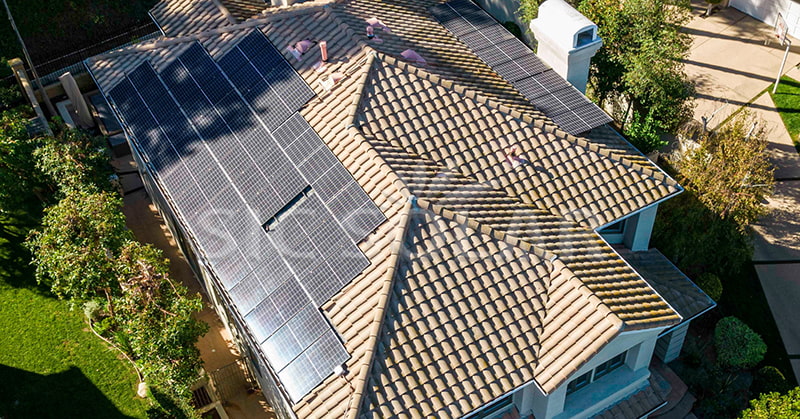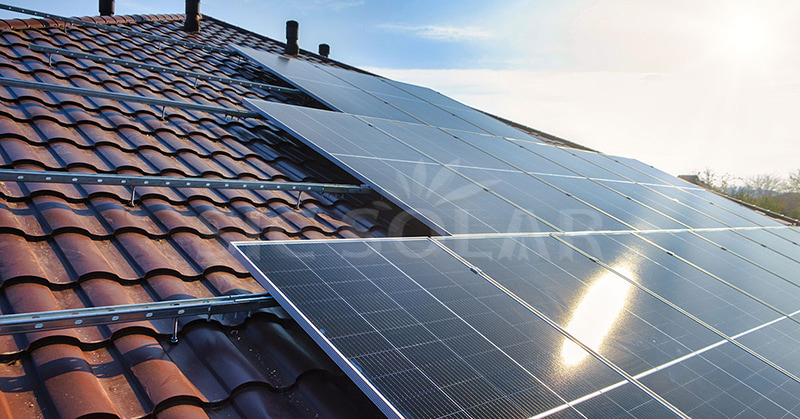Are Snow Guards a Good Idea?
For homeowners and businesses in areas with heavy snowfall, snow guards are an essential feature of their roofing system. Snow can accumulate on sloped roofs, creating a potential hazard when it slides off, causing damage or injury.
What Are Snow Guards?
Snow guards are devices installed on the roof to prevent snow and ice from sliding off too quickly or in large chunks. They work by holding the snow in place, allowing it to melt gradually rather than falling off suddenly, which could cause damage to property, vehicles, or people below.
These guards are often used on sloped roofs and are made from various materials such as metal, plastic, or composite. Snow guards are designed to withstand the weight of snow and ice while allowing water to flow safely off the roof once the snow melts. They come in different styles, including individual panels, strips, and bars, and can be placed strategically across the roof, especially near the eaves, where snow accumulation is most likely.
Why Are Snow Guards Important? 1. Preventing Damage to Property
One of the most significant risks posed by snow and ice on roofs is the potential for falling debris. In areas with heavy snow, large chunks of snow can slide off the roof suddenly, damaging cars, landscaping, windows, or even the roof itself. By using snow guards, you reduce the likelihood of such incidents, ensuring that snow remains on the roof until it melts away safely.
For solar panel installations, this is especially important. Snow sliding off the roof can damage solar panels or the mounting systems, affecting both the aesthetics and functionality of the solar system. SIC Solar, a leading provider of photovoltaic mounting solutions, ensures that their systems are robust enough to handle these challenges, but integrating snow guards offers an extra layer of protection for your solar investment.
2. Protecting People from Harm
Another major concern is the safety of individuals near the building. Snow falling from rooftops can be a serious hazard, especially around walkways, driveways, or areas where people may be working. Snow guards help mitigate this risk by preventing large snow masses from suddenly falling off the roof, providing peace of mind for homeowners, employees, and visitors alike.
If your property includes solar panels, snow guards can prevent the snow from sliding off the roof in a way that could damage the panels or even cause injury to someone near the installation area. Ensuring safe, gradual melting is crucial, particularly in residential or commercial areas where people are frequently moving around the building.
3. Preserving Roof and Solar Panel Integrity
Heavy snow and ice can put considerable strain on roofing materials and solar panel systems. Without snow guards, snow can accumulate on the roof and increase the load, potentially causing damage or premature wear and tear on both the roof and the solar panels. Over time, this can result in costly repairs or even complete system failure.
SIC Solar advanced mounting systems for solar panels are designed to be durable and resilient, but they can be further protected by ensuring that snow doesn’t cause undue stress on the structure. Snow guards help distribute the snow load evenly, preventing sudden shifts that could damage the panels or the mounting system.
4. Helping Solar Panels Perform More Effectively
In colder climates, snow accumulation on solar panels can obstruct sunlight, reducing their effectiveness. Snow guards help control the amount of snow that stays on the panels, allowing for more consistent and gradual melting. By keeping the snow in place, they reduce the risk of large ice dams or the sudden shifting of snow, both of which can obstruct solar panel performance.
Moreover, with SIC Solar mounting solutions, which are designed for stability and long-term performance, snow guards can ensure that solar panels maintain their efficiency and longevity throughout the winter months, especially in regions where snow accumulation is a regular occurrence.
Do You Need Snow Guards for Your Roof and Solar Panels?
While snow guards are more commonly used in regions with heavy snowfalls, they can be beneficial in any location where snow accumulation could pose a risk. If you live in an area with a mild winter but occasionally experience heavy snow, snow guards can still provide valuable protection.
For solar energy systems, especially those mounted on pitched roofs, snow guards are a prudent addition. The added weight and shifting of snow on solar panels can affect the integrity of the mounting systems. By using snow guards, you can extend the lifespan of your solar panels and minimize the risk of damage.
When considering snow guards, it's important to choose the right type based on your roof’s materials, pitch, and the typical snow loads in your area. A professional installer can help assess the best type and placement of snow guards to ensure optimal protection.
How SIC Solar Can Help
SIC Solar specializes in producing durable, high-quality mounting systems for photovoltaic installations, ensuring that your solar panels remain secure and functional in all types of weather. By integrating snow guards with SIC Solar robust mounting systems, you can provide additional protection for both the solar system and the surrounding property.
SIC Solar focus on reliability and long-term performance makes their products ideal for use in areas prone to harsh weather conditions. Their mounting systems are designed to handle snow and wind load while maintaining optimal panel performance, and snow guards provide that extra layer of safety and efficiency.










